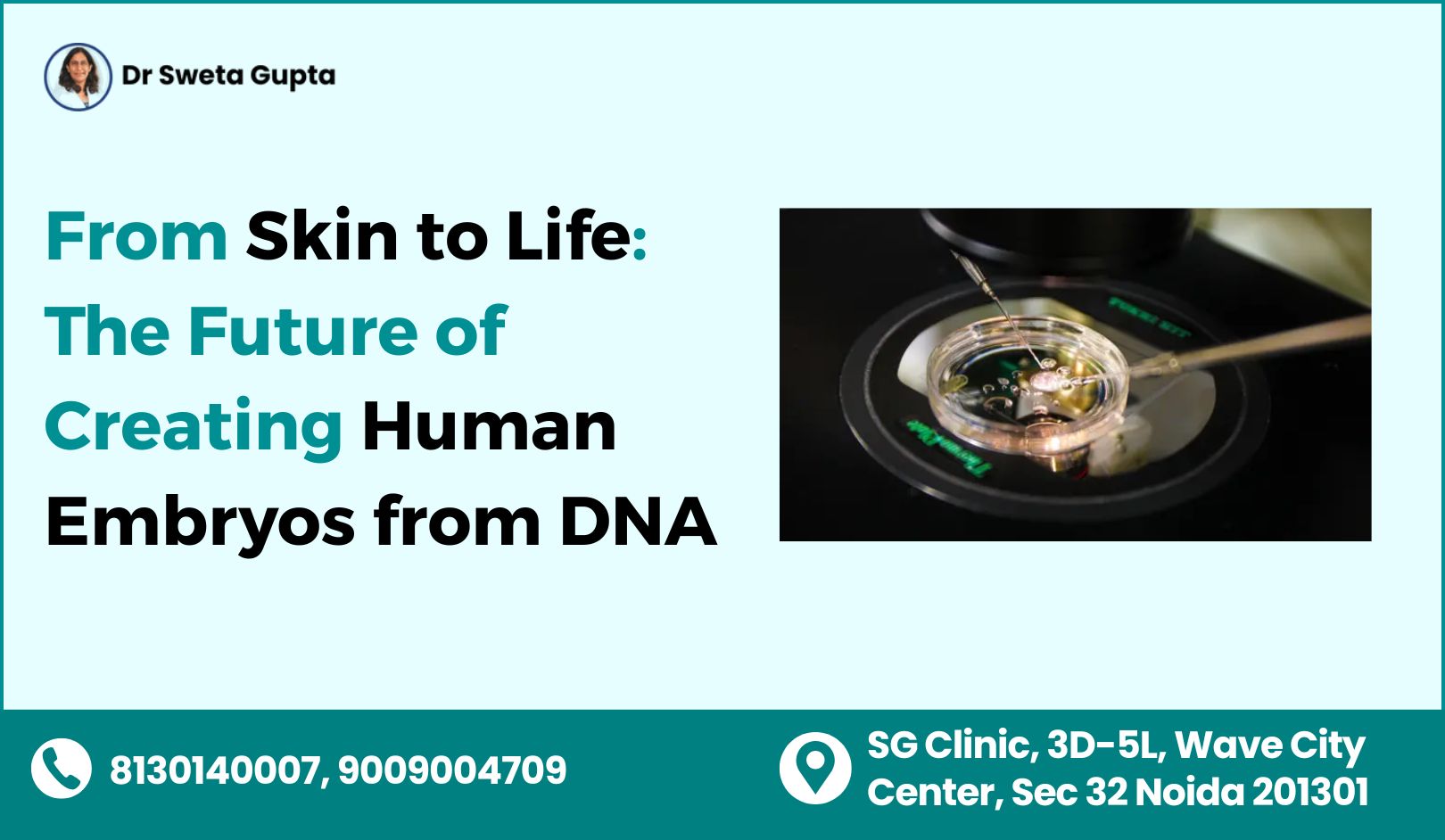In a pathbreaking development, scientists have in recent years moved closer to a vision once confined to science fiction: generating human embryos using DNA from skin cells. This experimental frontier blends cellular biology, genetic engineering, and ethical debate, and could one day reshape fertility treatments, medical research, and our understanding of life itself.
The Breakthrough & What Was Achieved
Earlier this year (2025), a research team reported success in creating human embryo-like structures using DNA from skin cells. In their protocol, scientists extracted the nucleus from a donor’s skin cell and inserted it into an egg whose own nucleus had been removed. This reconstructive approach mirrors techniques used in cloning and therapeutic cell research, but in this case the goal was not cloning an entire organism, but enabling embryonic development from alternative genetic material.
Of the reconstructed eggs, a small subset successfully fertilized with sperm and developed into early-stage embryos. Importantly, the embryos were not implanted—they were cultured only up to the legal and ethical limit (commonly about six or seven days). Some embryos showed chromosomal errors or failed to progress normally, highlighting that the method is still far from clinical use. But as a proof-of-concept, this work marks a major milestone in reproductive biology.
How It Works: From Skin Cell to Embryo
To understand this advance, one must appreciate the steps involved:
-
Skin Cell Harvesting: A biopsy retrieves somatic cells (skin, for example) from a person.
-
Nuclear Extraction: The nucleus—containing DNA—is isolated from that somatic cell.
-
Egg Enucleation: A donor egg is taken and its original nucleus removed, leaving only the cell cytoplasm.
-
Nuclear Transfer: The skin-cell nucleus is inserted into the enucleated egg.
-
Chromosomal Adjustment: In order to mimic natural egg formation, half the chromosomes may be removed, or other reprogramming is performed.
-
Fertilization: The reconstructed egg is fertilized with sperm in vitro.
-
Embryo Development: The fertilized egg divides and forms a blastocyst—a cluster of cells typical of early embryos.
In practical research, only a fraction of reconstructed eggs survive, and many exhibit abnormalities. The technique demands exquisite precision in genome reprogramming, chromosomal stability, and cellular environment.
Why This Matters: What Problems Could It Solve?
-
Infertility Solutions Beyond Eggs: Women with no viable eggs, diminished ovarian reserve, or menopause might one day use their own skin cells to become genetic mothers.
-
Cancer Survivors & Fertility Preservation: Patients whose reproductive systems are damaged by treatments like chemotherapy could regain genetic parenthood options.
-
Genetic Disease Avoidance: Embryos created from reprogrammed DNA could be subjected to genetic screening (PGT) to avoid inherited disorders.
-
Scientific Research & Regenerative Medicine: These embryos could help study early human development, organogenesis, or even help design cell therapies.
The Challenges & Risks
Despite the excitement, multiple hurdles remain:
-
Genetic Instability: Many reconstructed embryos show chromosomal abnormalities, failed cell division, or nonviable development.
-
Ethical & Legal Limits: Many nations, including India, restrict human embryo research beyond certain days. Implantation in humans is widely prohibited.
-
Safety & Long-Term Effects: Unknown risks in any potential offspring—epigenetic errors, developmental abnormalities, long-term health unknown.
-
Access, Equity & Cost: Such treatments would likely be extremely expensive initially—raising questions of who gets access.
-
Regulatory Oversight & Public Consent: Deciding who regulates this, what constraints are in place, and how societies accept it will be major issues.
How Close Are We to Real-World Application?
We are still in early experimental territory. The technique is not yet proven safe or efficient, and many embryos fail. For now, scientists and regulators must build rigorous oversight frameworks, extend studies in non-human models, and debate deep ethical questions. It may be years—or decades—before any clinical trials in humans are considered.
But the trajectory is clear: the ability to use skin-derived DNA to create embryos would transform fertility medicine. The concept isn’t just theoretical now—it has crossed from possibility into biological feasibility.
The Road Ahead: What Needs to Happen Next
-
Improved Techniques & Yield: Better cellular reprogramming, error correction, and mitochondrial control.
-
Longer & Safer Development Studies: Push embryos further in vitro in regulated settings (as permitted).
-
Robust Ethical Frameworks: Transparent public debate, global guidelines, religious and cultural perspectives.
-
Legal & Regulatory Infrastructure: Laws revisited to allow responsible advancement while protecting against misuse.
-
Public Trust & Education: People must understand risks, benefits, and limits before acceptance.
Conclusion
What once seemed like fantasy—creating life from skin—is now inching toward reality. The 2025 experiments using skin-cell DNA to reconstruct fertilizable eggs are not yet ready for clinical application, but they represent a turning point. In coming decades, they may reshape fertility treatments, genetic medicine, and what it means to be a biological parent.
But with power comes responsibility. Rigorous science, ethical restraints, regulatory checks, and public consensus must guide the journey. Only then will “From Skin to Life” become not just a slogan—but a safe, equitable reality in human reproduction.

